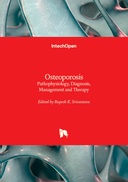Explore

Osteoporosis is defined as a systemic bone loss disease exemplified by the deterioration of bone tissues and low bone mineral density (BMD), subsequently leading to an enhanced risk of developing fragility-related fractures. It’s a chronic inflammatory condition and is the 4th most burdensome chronic disease after ischemic heart disease, dementia, and lung cancer, with a huge economic burden on the world economy. This skeletal disorder affects predominantly women compared to men, and the risk increases with age. Although currently available therapies to treat osteoporosis are effective, side effects (real and perceived) are impediments to treatment adherence by the patients. Thus, there is an exigent need for renewed interest in managing osteoporosis with a better understanding of the pathophysiology, diagnosis, and treatment regime so that safer and more effective management and treatment modalities can be developed. Research in the last decade has led to enormous interest in the pathophysiology of osteoporosis. Importantly, the immune system is now an established player in the development of osteoporosis (Immunoporosis). Also, various off-the-track management and treatment approaches (probiotics, Synbiotics, FMT, etc.) are now being considered for managing osteoporosis. The present edited book will compile the latest trends and knowledge in the field, thereby creating a novel knowledge database for effective and efficient management and therapy of osteoporosis.
This book is included in DOAB.
Why read this book? Have your say.
You must be logged in to comment.
